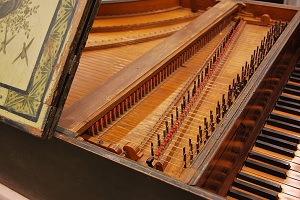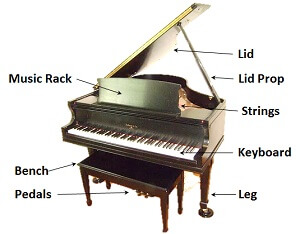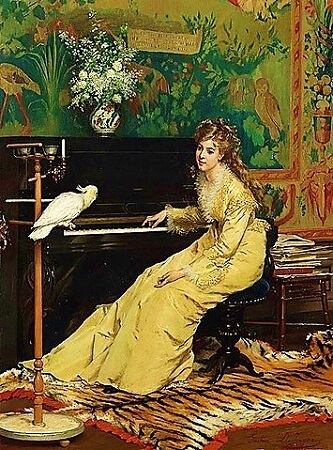 Plucky Strings and Peppy Percussion
Strings and Percussion
Plucky Strings and Peppy Percussion
Strings and Percussion

 Plucky Strings and Peppy Percussion
Strings and Percussion
Plucky Strings and Peppy Percussion
Strings and Percussion

Study the musical selection for one week.
Over the week:
Music lessons over the next two years group musical instruments into five major categories: strings, keyboards, percussion, brass, and woodwinds.
Keyboards include instruments played using a set of keys. Keys are levers pressed by the musician's fingers.
Keyboard instruments include harpsichords, pianos, and organs.
Examine the picture of a keyboard.

Examine a closeup of keys below.

See another picture of a keyboard below. Find the keys and find the strings.

Activity 1: Listen for the Animals Within the Composition
Each of the four movements in the recording features an animal or an animal habitat.
Act out each animal or an animal within the habitat as you listen to each movement.
Activity 2: Study the Parts of a Piano

Activity 3: Can You Find It?
Study the lesson image, 'Woman at the Piano with Cockatoo,' by Gustave de Jonghe, and find the following:
